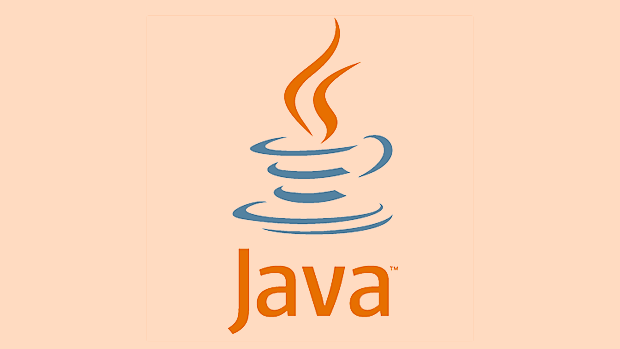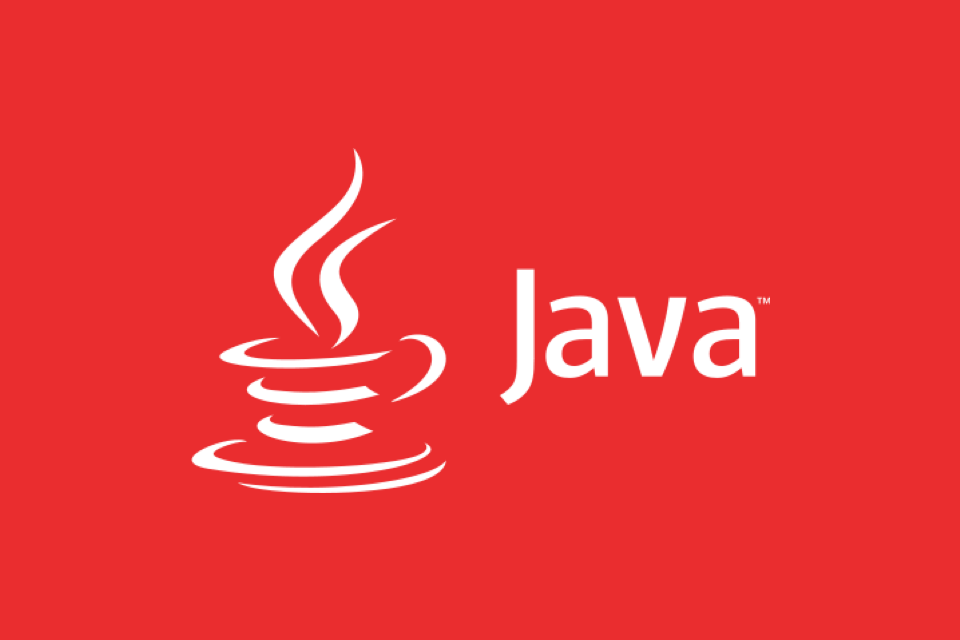The Complete Guide to Logging in Java with SLF4J and Logback
Aug 02, 2025 am 01:36 AMSLF4J and Logback are recommended logging solutions in Java applications. 1. First, introduce slf4j-api and logback-classic dependencies through Maven; 2. Use SLF4J's LoggerFactory in the code to obtain the logger, and use parameterized messages such as logger.info("{}", msg); 3. Configure logback.xml under src/main/resources, define appender, encoder and log levels, and support output methods such as console, files, scroll files, etc.; 4. You can use logback-test.xml to test the environment, and use different configuration files or Spring Boot's logback-spring.xml in production environment to achieve multi-environment management; 5. Be careful to avoid hybrid logging frameworks, ensure that the log directory exists, and use filters and rolling strategies to optimize log behavior, ultimately implementing a flexible, efficient, and maintainable log system.

Logging is a critical part of any Java application — it helps with debugging, monitoring, and understanding what your application is doing in production. If you're using Java, SLF4J (Simple Logging Facade for Java) and Logback are two of the most popular and effective tools for handling logs. Together, they offer a clean, flexible, and high-performance logging solution.

Here's a complete guide to setting up and using SLF4J with Logback in your Java projects.
What Is SLF4J and Why Use It?
SLF4J is not a logging framework itself — it's a logging facade . That means it provides a simple abstraction layer over various logging implementations like Logback, Log4j, or java.util.logging.

Key benefits:
- Decouples your code from a specific logging framework.
- You can switch logging backends without changing your code.
- Clean, consistent API:
logger.info("User logged in: {}", username);
When you use SLF4J, you write logging statements against its API, and at runtime, it delegates to an actual logging framework — in our case, Logback , which was designed by the same developer (Ceki Gülcü) as SLF4J and is considered its natural successor.

Why Logback?
Logback is the default and recommended implementation for SLF4J. It improves upon Log4j in several ways:
- Faster performance and lower memory consumption.
- Automatic reload of configuration files when changed.
- Native support for SLF4J — no adapters needed.
- Flexible configuration with support for filters, multiple appenders, and rich formatting.
It comes in three modules:
-
logback-core— the foundation. -
logback-classic— supports SLF4J and adds extra features. -
logback-access— integrates with Servlet containers for HTTP access logs.
Step 1: Add Dependencies (Maven)
To use SLF4J with Logback, include the following in your pom.xml :
<dependencies>
<!-- SLF4J API -->
<dependency>
<groupId>org.slf4j</groupId>
<artifactId>slf4j-api</artifactId>
<version>1.7.36</version>
</dependency>
<!-- Logback Classic (including core and binds to SLF4J) -->
<dependency>
<groupId>ch.qos.logback</groupId>
<artifactId>logback-classic</artifactId>
<version>1.4.11</version>
</dependency>
</dependencies>? Note: You don't need to add
logback-coreexplicitly — it's included inlogback-classic.
With these dependencies, SLF4J will automatically detect and use Logback as the underlying implementation.
Step 2: Write Logging Code
Use the SLF4J API in your classes:
import org.slf4j.Logger;
import org.slf4j.LoggerFactory;
public class UserService {
private static final Logger logger = LoggerFactory.getLogger(UserService.class);
public void login(String username) {
logger.debug("Attempting login for user: {}", username);
if (isValidUser(username)) {
logger.info("User {} logged in successfully", username);
} else {
logger.warn("Failed login attempt for user: {}", username);
}
}
private boolean isValidUser(String username) {
// dummy logic
return "admin".equals(username);
}
}Best practices:
- Always use parameterized messages (
{}) to avoid string concatenation when logging is disabled. - Choose the right log level:
-
trace: Very detailed info, usually only for debugging. -
debug: Useful for debugging. -
info: General application events. -
warn: Potential issues. -
error: Errors that need attention.
-
Step 3: Configure Logback
Logback looks for a configuration file at startup:
-
logback-test.xml(used in testing) -
logback.xml(used in production)
Place logback.xml in src/main/resources/ .
Basic logback.xml Example
<configuration>
<!-- Console Appender -->
<appender name="CONSOLE" class="ch.qos.logback.core.ConsoleAppender">
<encoder>
<pattern>%d{yyyy-MM-dd HH:mm:ss} [%thread] %-5level %logger{36} - %msg%n</pattern>
</encoder>
</appender>
<!-- File Appender -->
<appender name="FILE" class="ch.qos.logback.core.FileAppender">
<file>logs/application.log</file>
<encoder>
<pattern>%d{yyyy-MM-dd HH:mm:ss} [%thread] %-5level %logger{50} - %msg%n</pattern>
</encoder>
</appender>
<!-- Root logger -->
<root level="INFO">
<appender-ref ref="CONSOLE"/>
<appender-ref ref="FILE"/>
</root>
<!-- Specific logger (optional) -->
<logger name="com.example.UserService" level="DEBUG" addition="false">
<appender-ref ref="CONSOLE"/>
</logger>
</configuration>Explanation:
- Appenders define where logs go: console, file, database, etc.
- Encoders format the log output.
- Root logger sets the default level and appenders.
- Logger elements allow per-class or per-package customization.
-
additivity="false"prevents duplicate logging if the same message would go to multiple appenders.
Advanced Configuration Features
1. Rolling File Appender (Rotate Logs)
Avoid huge log files by rotating them daily or by size:
<appender name="ROLLING" class="ch.qos.logback.core.rolling.RollingFileAppender">
<file>logs/app.log</file>
<encoder>
<pattern>%d{yyyy-MM-dd HH:mm:ss} %-5level %logger{36} - %msg%n</pattern>
</encoder>
<rollingPolicy class="ch.qos.logback.core.rolling.TimeBasedRollingPolicy">
<!-- Daily rollover -->
<fileNamePattern>logs/app.%d{yyyy-MM-dd}.%i.gz</fileNamePattern>
<timeBasedFileNamingAndTriggeringPolicy class="ch.qos.logback.core.rolling.SizeAndTimeBasedFNATP">
<maxFileSize>10MB</maxFileSize>
</timeBasedFileNamingAndTriggeringPolicy>
<maxHistory>30</maxHistory>
<totalSizeCap>1GB</totalSizeCap>
</rollingPolicy>
</appender>This rolls logs daily and compresses them when they exceed 10MB, keeping up to 30 days of logs.
2. Conditional Logging with Filters
Filter out specific messages:
<appender name="CONSOLE" class="ch.qos.logback.core.ConsoleAppender">
<filter class="ch.qos.logback.classic.filter.LevelFilter">
<level>WARN</level>
<onMatch>ACCEPT</onMatch>
<onMismatch>DENY</onMismatch>
</filter>
<encoder>
<pattern>%-5level %logger{36} - %msg%n</pattern>
</encoder>
</appender> This appender only logs WARN messages.
Environment-Specific Logging
Use different configurations for dev, test, and prod.
Option 1: Multiple Config Files
-
logback-test.xml→ for unit tests -
logback-dev.xml,logback-prod.xml→ use with-Dlogback.configurationFile=path/to/file.xml
Option 2: Spring Boot (Bonus)
If you're using Spring Boot , just drop logback-spring.xml in src/main/resources , and use Spring profiles:
<springProfile name="dev">
<root level="DEBUG">
<appender-ref ref="CONSOLE"/>
</root>
</springProfile>
<springProfile name="prod">
<root level="INFO">
<appender-ref ref="ROLLING"/>
</root>
</springProfile>Common Pitfalls & Tips
- ? Don't mix logging frameworks (eg, using
java.util.loggingand SLF4J together) — use bridges likejul-to-slf4jif needed. - ? Always use SLF4J's
{}placeholders — never concatenate strings in log statements. - ? Test your config: typo in
logback.xml? It might fall back to defaults silently. - ? Ensure
logs/directory exists or use absolute paths. - ?? Enable debug mode for Logback config: add
<configuration debug="true"></configuration>to see how Logback loads your config.
Summary
SLF4J Logback is a powerful, standard combo for Java logging. Here's what you need to remember:
- Use SLF4J in your code — it's the interface.
- Use Logback as the implementation — it's fast and feature-rich.
- Configure via
logback.xmlwith appenders, encoders, and log levels.
The above is the detailed content of The Complete Guide to Logging in Java with SLF4J and Logback. For more information, please follow other related articles on the PHP Chinese website!

Hot AI Tools

Undress AI Tool
Undress images for free

Undresser.AI Undress
AI-powered app for creating realistic nude photos

AI Clothes Remover
Online AI tool for removing clothes from photos.

Clothoff.io
AI clothes remover

Video Face Swap
Swap faces in any video effortlessly with our completely free AI face swap tool!

Hot Article

Hot Tools

Notepad++7.3.1
Easy-to-use and free code editor

SublimeText3 Chinese version
Chinese version, very easy to use

Zend Studio 13.0.1
Powerful PHP integrated development environment

Dreamweaver CS6
Visual web development tools

SublimeText3 Mac version
God-level code editing software (SublimeText3)

Hot Topics
 What is the `enum` type in Java?
Jul 02, 2025 am 01:31 AM
What is the `enum` type in Java?
Jul 02, 2025 am 01:31 AM
Enums in Java are special classes that represent fixed number of constant values. 1. Use the enum keyword definition; 2. Each enum value is a public static final instance of the enum type; 3. It can include fields, constructors and methods to add behavior to each constant; 4. It can be used in switch statements, supports direct comparison, and provides built-in methods such as name(), ordinal(), values() and valueOf(); 5. Enumeration can improve the type safety, readability and flexibility of the code, and is suitable for limited collection scenarios such as status codes, colors or week.
 What is the interface segregation principle?
Jul 02, 2025 am 01:24 AM
What is the interface segregation principle?
Jul 02, 2025 am 01:24 AM
Interface Isolation Principle (ISP) requires that clients not rely on unused interfaces. The core is to replace large and complete interfaces with multiple small and refined interfaces. Violations of this principle include: an unimplemented exception was thrown when the class implements an interface, a large number of invalid methods are implemented, and irrelevant functions are forcibly classified into the same interface. Application methods include: dividing interfaces according to common methods, using split interfaces according to clients, and using combinations instead of multi-interface implementations if necessary. For example, split the Machine interfaces containing printing, scanning, and fax methods into Printer, Scanner, and FaxMachine. Rules can be relaxed appropriately when using all methods on small projects or all clients.
 Asynchronous Programming Techniques in Modern Java
Jul 07, 2025 am 02:24 AM
Asynchronous Programming Techniques in Modern Java
Jul 07, 2025 am 02:24 AM
Java supports asynchronous programming including the use of CompletableFuture, responsive streams (such as ProjectReactor), and virtual threads in Java19. 1.CompletableFuture improves code readability and maintenance through chain calls, and supports task orchestration and exception handling; 2. ProjectReactor provides Mono and Flux types to implement responsive programming, with backpressure mechanism and rich operators; 3. Virtual threads reduce concurrency costs, are suitable for I/O-intensive tasks, and are lighter and easier to expand than traditional platform threads. Each method has applicable scenarios, and appropriate tools should be selected according to your needs and mixed models should be avoided to maintain simplicity
 Differences Between Callable and Runnable in Java
Jul 04, 2025 am 02:50 AM
Differences Between Callable and Runnable in Java
Jul 04, 2025 am 02:50 AM
There are three main differences between Callable and Runnable in Java. First, the callable method can return the result, suitable for tasks that need to return values, such as Callable; while the run() method of Runnable has no return value, suitable for tasks that do not need to return, such as logging. Second, Callable allows to throw checked exceptions to facilitate error transmission; while Runnable must handle exceptions internally. Third, Runnable can be directly passed to Thread or ExecutorService, while Callable can only be submitted to ExecutorService and returns the Future object to
 Best Practices for Using Enums in Java
Jul 07, 2025 am 02:35 AM
Best Practices for Using Enums in Java
Jul 07, 2025 am 02:35 AM
In Java, enums are suitable for representing fixed constant sets. Best practices include: 1. Use enum to represent fixed state or options to improve type safety and readability; 2. Add properties and methods to enums to enhance flexibility, such as defining fields, constructors, helper methods, etc.; 3. Use EnumMap and EnumSet to improve performance and type safety because they are more efficient based on arrays; 4. Avoid abuse of enums, such as dynamic values, frequent changes or complex logic scenarios, which should be replaced by other methods. Correct use of enum can improve code quality and reduce errors, but you need to pay attention to its applicable boundaries.
 Understanding Java NIO and Its Advantages
Jul 08, 2025 am 02:55 AM
Understanding Java NIO and Its Advantages
Jul 08, 2025 am 02:55 AM
JavaNIO is a new IOAPI introduced by Java 1.4. 1) is aimed at buffers and channels, 2) contains Buffer, Channel and Selector core components, 3) supports non-blocking mode, and 4) handles concurrent connections more efficiently than traditional IO. Its advantages are reflected in: 1) Non-blocking IO reduces thread overhead, 2) Buffer improves data transmission efficiency, 3) Selector realizes multiplexing, and 4) Memory mapping speeds up file reading and writing. Note when using: 1) The flip/clear operation of the Buffer is easy to be confused, 2) Incomplete data needs to be processed manually without blocking, 3) Selector registration must be canceled in time, 4) NIO is not suitable for all scenarios.
 Exploring Different Synchronization Mechanisms in Java
Jul 04, 2025 am 02:53 AM
Exploring Different Synchronization Mechanisms in Java
Jul 04, 2025 am 02:53 AM
Javaprovidesmultiplesynchronizationtoolsforthreadsafety.1.synchronizedblocksensuremutualexclusionbylockingmethodsorspecificcodesections.2.ReentrantLockoffersadvancedcontrol,includingtryLockandfairnesspolicies.3.Conditionvariablesallowthreadstowaitfor
 How Java ClassLoaders Work Internally
Jul 06, 2025 am 02:53 AM
How Java ClassLoaders Work Internally
Jul 06, 2025 am 02:53 AM
Java's class loading mechanism is implemented through ClassLoader, and its core workflow is divided into three stages: loading, linking and initialization. During the loading phase, ClassLoader dynamically reads the bytecode of the class and creates Class objects; links include verifying the correctness of the class, allocating memory to static variables, and parsing symbol references; initialization performs static code blocks and static variable assignments. Class loading adopts the parent delegation model, and prioritizes the parent class loader to find classes, and try Bootstrap, Extension, and ApplicationClassLoader in turn to ensure that the core class library is safe and avoids duplicate loading. Developers can customize ClassLoader, such as URLClassL






